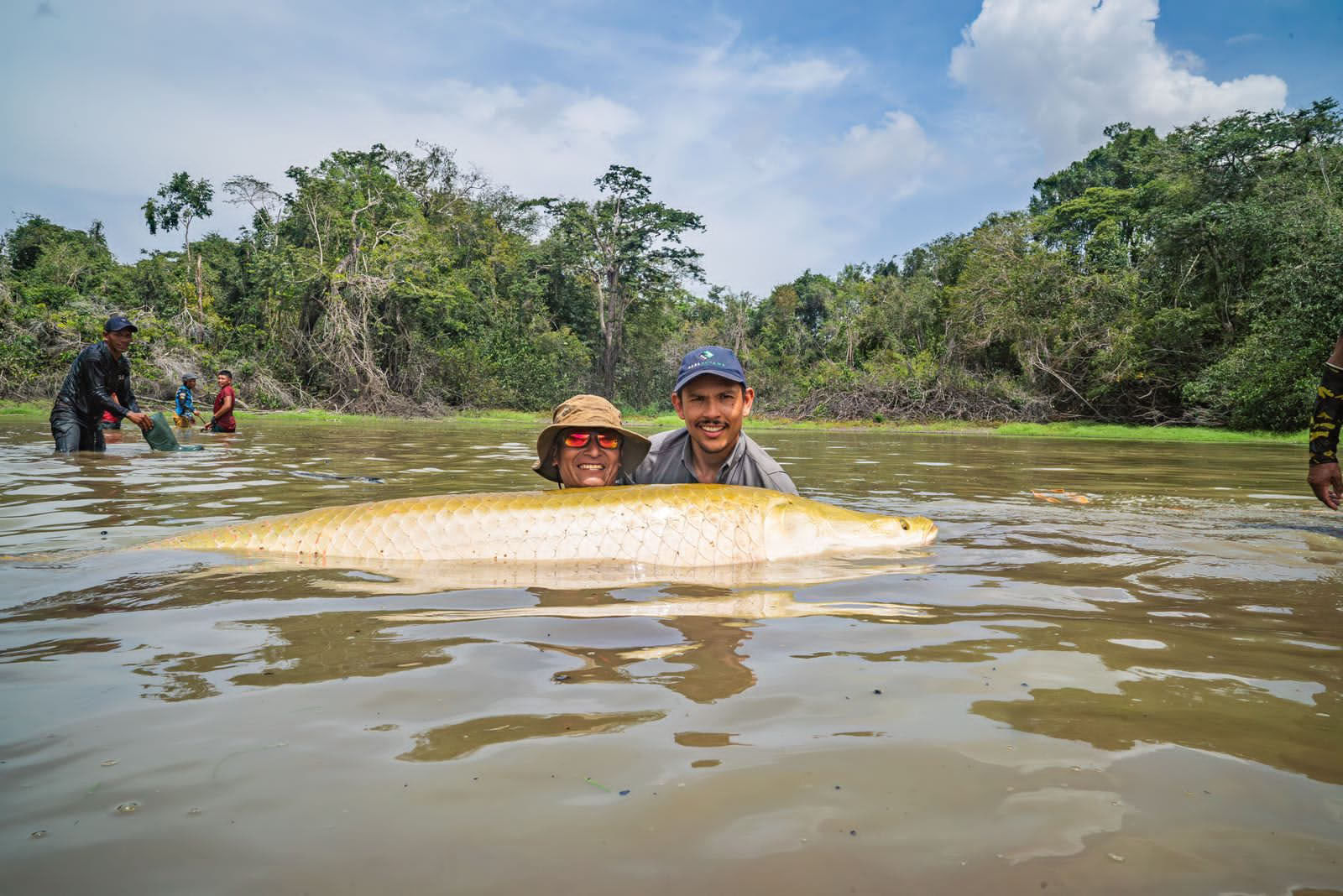Dry weather necessitates relocation of arapaimas – Stabroek News
Dry weather necessitates relocation of arapaimas Stabroek News


Relocation of Stranded Arapaimas

Team Adventure Guianas (Piraiba Lodge) and volunteers from Apoteri Village, KWA, and ARM recently joined forces to relocate stranded arapaimas. This initiative aligns with the Sustainable Development Goals (SDGs) set by the United Nations to promote environmental sustainability and protect biodiversity.
Efforts to Protect Arapaimas
The arapaima, also known as the pirarucu, is a large freshwater fish native to the Amazon Basin. It is an important species both ecologically and economically. However, due to the prolonged dry season, arapaimas often become stranded in isolated pools of water, putting their survival at risk.
To address this issue, Adventure Guianas, Piraiba Lodge, and local volunteers have taken action to relocate these stranded arapaimas to safer habitats. This not only ensures the survival of the species but also contributes to the achievement of SDG 14 (Life Below Water) and SDG 15 (Life on Land).
Photo Highlights
- Photo 1: Team members carefully capturing a stranded arapaima.
- Photo 2: Volunteers working together to transport the arapaima to a suitable habitat.
- Photo 3: The relocated arapaima swimming freely in its new environment.
We would like to express our gratitude to Alex Arjoon and the team from Reel Guyana for providing the photographs that document this ongoing effort.
SDGs, Targets, and Indicators
1. SDGs addressed or connected to the issues highlighted in the article:
- SDG 14: Life Below Water – This goal aims to conserve and sustainably use the oceans, seas, and marine resources.
- SDG 15: Life on Land – This goal focuses on protecting, restoring, and promoting sustainable use of terrestrial ecosystems.
2. Specific targets under those SDGs based on the article’s content:
- SDG 14.2: By 2020, sustainably manage and protect marine and coastal ecosystems to avoid significant adverse impacts.
- SDG 15.5: Take urgent and significant action to reduce degradation of natural habitats, halt the loss of biodiversity, and protect and prevent the extinction of threatened species.
3. Indicators mentioned or implied in the article to measure progress towards the identified targets:
- Indicator 14.2.1: Proportion of national exclusive economic zones managed using ecosystem-based approaches.
- Indicator 15.5.1: Red List Index (RLI) – an indicator that measures changes in the overall extinction risk of species over time.
4. Table presenting the findings:
| SDGs | Targets | Indicators |
|---|---|---|
| SDG 14: Life Below Water | 14.2: By 2020, sustainably manage and protect marine and coastal ecosystems to avoid significant adverse impacts. | 14.2.1: Proportion of national exclusive economic zones managed using ecosystem-based approaches. |
| SDG 15: Life on Land | 15.5: Take urgent and significant action to reduce degradation of natural habitats, halt the loss of biodiversity, and protect and prevent the extinction of threatened species. | 15.5.1: Red List Index (RLI) – an indicator that measures changes in the overall extinction risk of species over time. |
Explanation:
The article mentions the efforts of Adventure Guianas and volunteers to relocate stranded arapaimas, which are freshwater fish found in South America. This highlights the importance of protecting and conserving aquatic ecosystems, connecting to SDG 14: Life Below Water. The specific target under this goal, 14.2, focuses on sustainably managing and protecting marine and coastal ecosystems to avoid adverse impacts.
Additionally, the article mentions the collaboration to relocate arapaimas to prevent their potential extinction, which relates to SDG 15: Life on Land. The target under this goal, 15.5, emphasizes the need for urgent action to reduce habitat degradation, halt biodiversity loss, and prevent species extinction.
The indicators mentioned in the article are not explicitly stated but can be inferred based on the targets. Indicator 14.2.1 measures the proportion of national exclusive economic zones managed using ecosystem-based approaches, indicating progress towards sustainable management of marine and coastal ecosystems. Indicator 15.5.1, the Red List Index (RLI), measures changes in the overall extinction risk of species over time, providing a measure of progress in preventing species extinction and protecting biodiversity.
Copyright: Dive into this article, curated with care by SDG Investors Inc. Our advanced AI technology searches through vast amounts of data to spotlight how we are all moving forward with the Sustainable Development Goals. While we own the rights to this content, we invite you to share it to help spread knowledge and spark action on the SDGs.
Fuente: stabroeknews.com

Join us, as fellow seekers of change, on a transformative journey at https://sdgtalks.ai/welcome, where you can become a member and actively contribute to shaping a brighter future.







